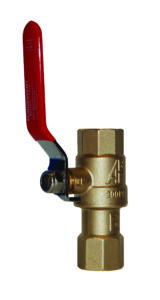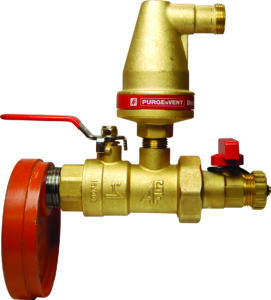
Fire sprinkler pipe corrosion is a silent threat to a system. It’s difficult to detect without an inconvenient inspection for building tenants. When left undetected, it can cause anything from a minor leak to serious danger for building occupants and property.
Corrosion occurs when water, oxygen, and ferrous metal react. Metallic fire sprinkler pipe provides the perfect environment for corrosion.
Filling a wet system traps a small amount of air in the pipe. It reacts with the water and metal pipe to cause corrosion. Condensation and trapped water pools inside dry system pipes. That provides the moisture needed to react with the air and metal.
Corrosion deteriorates the pipe and causes buildup. That can impede water flow and break off to block a sprinkler head. Both risk personal injuries and loss of property due to reduced system efficiency.
Corrosion can also cause leaks and other malfunctions. That leads to unexpected shutdowns for repairs and inconvenienced building occupants.
AGF simplified corrosion management with their cost-effective air vents and corrosion monitors.
Protect your system from corrosion with these three steps.
Step One: Install Air Vents to Prevent Fire Sprinkler Pipe Corrosion
Studies by the National Fire Prevention Association (NFPA) found a major cause of corrosion. Trapped air in wet systems is a major factor contributing to internal pipe corrosion.
Air vents release trapped air to help prevent corrosion. Due to this, NFPA 13 has required air vents on all wet pipe sprinkler systems since the 2016 edition.
In response, AGF designed a patented line of air vents–PURGEnVENT. Their air vents are compact, easy to install, and meet NFPA 13 (2016) requirements.
 Manual Air Venting – An Economical Option
Manual Air Venting – An Economical Option
Manual air vents release air while the system is filled.
AGF offers the most economical, purpose-built manual air venting valve on the market.
Model 7910 reduces labor costs when filling the system by including a Teflon ball check. It rises to stop the water from spilling out when the pipes are full. That eliminates the need for a second person watching to close the valve.
It also speeds up the emptying of a system for service. Simply open when the system is filling, and close when the system is operational.
Automatic Air Vents – Continuous Air Venting
 Automatic air vents continuously vent air while the system is operational.
Automatic air vents continuously vent air while the system is operational.
AGF’s Model 7900 includes a patented conical design that vents air without leaking water. It saves labor and material cost by not requiring a drain line or drip pan.
For faster system filling and draining, open the extra purge valve.
For even faster and simpler installations, AGF’s Model 7930 pre-attached end cap. Simply couple it to the end of a branch line.
Step Two: Install Corrosion Monitors

Monitor the rate of corrosion for better insight into your system. Corrosion monitors alert you of the issue before a leak may occur.
AGF’s CORRinSITE monitor is easy to install and understand.
The CORRinSITE plug is made from the same material as the pipe but with a hollow center. There’s a wall layer equal to 1/3 the thickness of Schedule 10 pipe and 1/5 the thickness of Schedule 40 pipe. It is available with a mechanical tee or with a section of grooved pipe.
When the sacrificial wall corrodes through, moisture enters the hollow cavity. This triggers the white sight glass to turn fluorescent orange.
Monitors provide accurate real-time information about internal pipe wall loss. With that, building owners and contractors can better plan future system needs.
For example, let’s say you install CORRinSITE plugs on a new Schedule 10 system. After 3 years, the plug indicators turns orange. That means the system would corrode through in two more years.
With that information, owners and contractors can make informed decisions. They can try to extend system life or plan out system replacement before a disruptive system failure.
Step Three: Make Sure Building Tenants Know Who to Call

CORRinSITE corrosion monitors offer a clear indication of corrosion. Ideally, the building tenant would call their fire sprinkler contractor if they saw the indicator.
AGF offers a custom faceplate for the CORRinSITE plug that includes the company name and contact information. That way, anyone who sees the plug turn orange knows who to alert.
Corrosion can put building tenant safety and property at risk. But there are steps contractors can take to prevent that.
With AGF’s economical, reliable, and code-compatible air vents and corrosion monitors, contractors can help prevent corrosion and monitor its progress, better serving their building tenants.
A version of this article was originally seen in the January 2020 edition of Fire Protection Contractor magazine.
